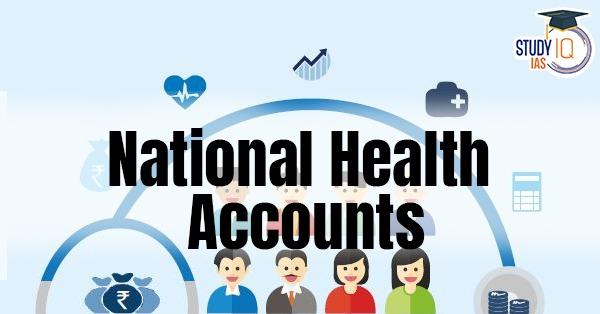Table of Contents
About National Health Account (NHA)
- National Health Account 2018-19 is the sixth consecutive National Health Accountestimates report prepared by National Health Systems Resource Centre (NHSRC), designated as National Health Accounts Technical Secretariat (NHATS) in 2014 by the Union Health Ministry.
- System of Health Accounts 2011 framework (SHA 2011): National Health Accounts estimates for India are based on SHA 2011 framework and National Health AccountGuidelines for India, 2016.
- SHA 2011 defines health accounts as a systematic description of the financial flows related to consumption of healthcare goods and services and a standard for classifying health expenditures according to the three axes – consumption, provision, and financing

Highlight Of National Health Account Report
- Government health expenditure to the GDP: It has increased from 1.15% in 2013-14 to 1.28% in 2018-19.
- However, Union government’s healthcare declined to 1.28% of GDP in 2018-19 from 1.35% in 2017-18.
- Total health expenditure (money spent on healthcare by the government, people, private entities and external funding) has fallen from 3.9% of the GDP to 3.2% in five years ending in 2018-19.
- Share of Government National Health Expenditure in Total Health Expenditure has increased over time.
- In 2018-19, the share of government expenditure was 40.6%, substantially higher than the share of 28.6% in 2013-14.
- Per capita government spending on National Health care has increased by 74% since 2013-14.
- Out-of-Pocket Expenditure (OOPE) as percentage of total health expenditure has declined substantially by 16% points, from 64.2% to 48.2%.
- Per capita out-of-pocket expenditure in the country has decreased by 8% since 2013-14, from Rs. 2,366 to Rs. 2,155 currently.
- In Worldwide per-capita OOPE, India ranks 66th out of 189 countries.
- Out-of-pocket expenditures are expenditures directly made by households at the point of receiving healthcare. This indicates the extent of financial protection available for households towards healthcare payments.
- Social security expenditure on health includes the social health insurance program, government-financed health insurance schemes, and medical reimbursements made to government employees.
- Total health expenditure is the sum of current health expenditure and capital health expenditure during the same year.
- Social security expenditure on health as a percentage of total health expenditure growing from 6% to 9.6% now.
- Government-financed health insurance expenditure has increased by 167% since 2013-14.
- Atma-Nirbharta in Health Sector: Dependence on external funding in the health sector of the country has declined to 0.4% in 2018-19 from 2.3% in 2004-05, showcasing India’s economic self-reliance.
- Sector wise Healthcare Expenditure: Of the Current Health Expenditures (CHE), the Union Government’s share is 11.71% of CHE and the State Governments’ share is 19.63% of CHE.
- Primary Vs Secondary Vs Tertiary Health Care: Current Health Expenditure attributed to Primary Care is of around 47.4%, Secondary Care of 31.7%, Tertiary care of 14.9% and governance and supervision of 4.0%.
- Primary and secondary care accounts for more than 80% of the current Government Health Expenditure.
- Between 2013-14 and 2018-19, in government, the share of primary and secondary care has increased from 74% to 86%.
- Government’s expenditure on Primary Care is 55.2%, Secondary Care is 30.5% and Tertiary Care is 5.9%.
- In case of the private sector, the share of tertiary care has increased but primary and secondary care has declined.
- Private expenditure on Primary Care is 36.9%, Secondary Care is 33.3% and Tertiary Care is 26.9%.
- Primary and secondary care accounts for more than 80% of the current Government Health Expenditure.
- Provider of health care services: Current Health Expenditure (CHE) attributed Rs. 93,689 crores to Government Hospitals (17.34% of CHE) and Rs. 1,55,013 crores to Private Hospitals (28.69% of CHE).





















 WhatsApp
WhatsApp